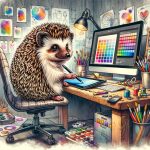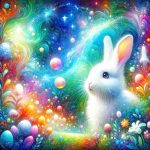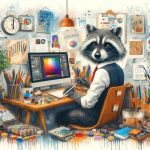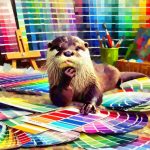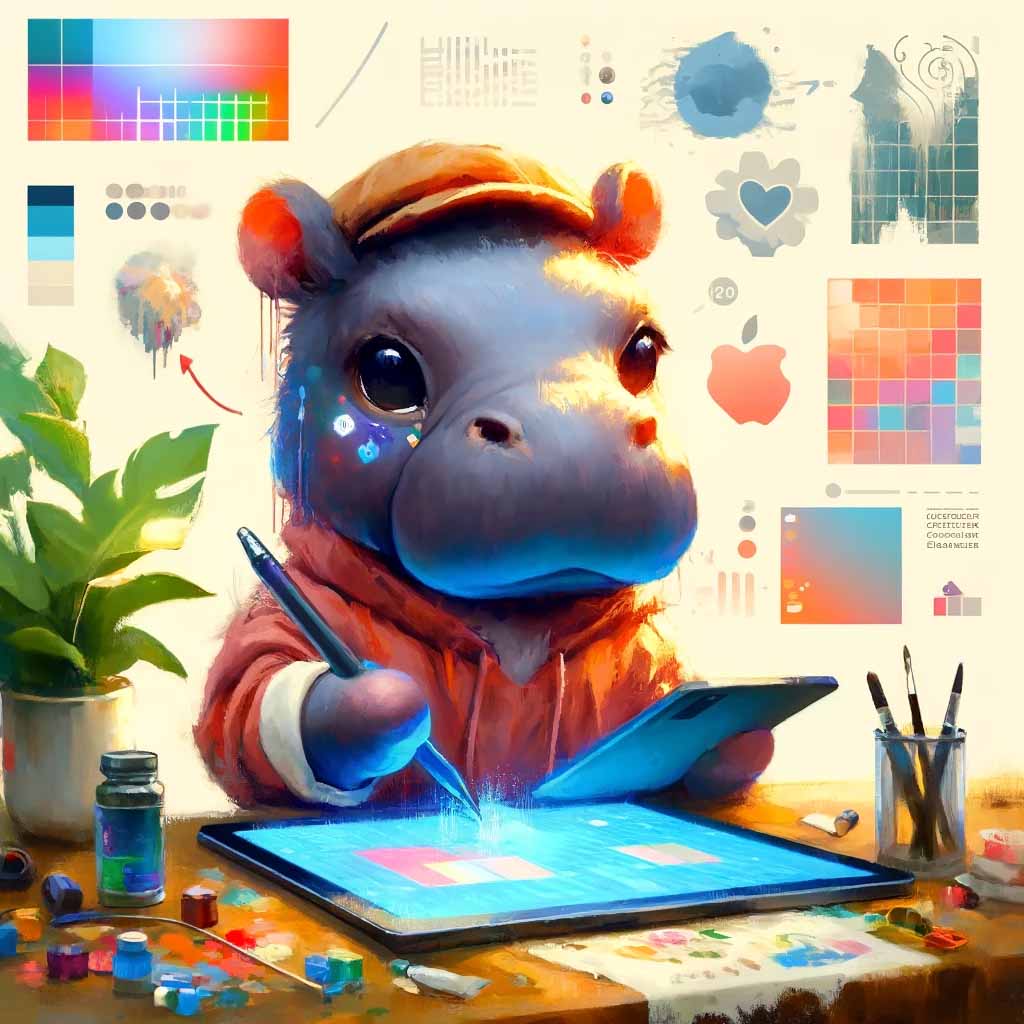
Graphic design is a mirror reflecting the rapid changes in technology and shifts in cultural landscapes. As we plunge deeper into the digital age, accelerated by a global pandemic, the role of design becomes more pivotal in communication and expression. This article explores five significant graphic design trends that are set to shape the visual world in 2024, offering both challenges and opportunities for creatives. Each trend provides a unique insight into the potential futures of design, hinting at a complex, visually rich tapestry of styles and aesthetics.
Cyberpunk Resurgence
Cyberpunk isn’t just a speculative science fiction genre anymore; it’s a powerful aesthetic that infuses graphic design with a raw, gritty edge. Characterized by its dystopian outlook, cyberpunk in graphic design combines high-tech elements with a deep, often dark urban vibe. This blend of the old and the new, the sophisticated and the street, creates a compelling visual narrative that speaks to contemporary anxieties and fascinations.
Recent campaigns in the entertainment industry, particularly in gaming and movies, have leaned heavily into cyberpunk themes. Posters for blockbuster films and viral marketing for video games use neon lights, chaotic urban backdrops, and a sense of rebellion to attract a younger, digitally-native audience. These elements create an immersive world that viewers can’t help but dive into.
The visual trademarks of cyberpunk include saturated neon palettes, glitch art, and digital decay. Designers use these to craft scenes that appear both futuristic and broken down. The contrast between bright neon and dark shadows not only defines the cyberpunk aesthetic but also highlights the underlying theme of technology as both a beacon of progress and a potential source of societal decay.
Hyper-Realistic 3D Design
The advances in CGI and rendering technologies have brought hyper-realistic 3D design to the forefront of graphic design. This trend is not just about aesthetics; it’s about creating a sensory experience that transcends traditional 2D mediums. Designers are now able to fabricate visuals that are so detailed and lifelike that they blur the line between reality and digital creation.
In advertising, hyper-realistic 3D can be seen in everything from detailed renderings of products to animated commercials that mimic real-life. For instance, car companies often use 3D models to showcase the sleek details of new models, creating a realistic visual experience that allows potential buyers to virtually “feel” the product before they see it in person.
The key elements of hyper-realistic 3D design include lifelike textures, accurate shadows, and exceptionally rendered lighting effects. These components are essential for creating depth and realism. Designers often spend hours tweaking the light settings and shadow play to mimic natural light as closely as possible, which is crucial for achieving the hyper-realistic look.
Retro-futurism
Retro-futurism is a celebration of the past as imagined by the future. It is a style that combines the optimistic imaginations of yesteryears with contemporary technological concepts. This trend is particularly appealing because it offers a nostalgic escape combined with a futuristic twist, creating a unique and engaging aesthetic.
Examples of retro-futurism can be found in branding and product design, where elements from the 1960s’ space-age designs are fused with modern-day digital techniques. A classic example is the use of atomic age symbols alongside VR technology, illustrating a bridge between two eras. This blend helps brands stand out by marrying familiarity with innovation.
The visual components of retro-futurism include pastel and neon color schemes, vintage-inspired typography, and futuristic visuals. Designers often experiment with these elements to produce work that feels both timeless and innovative. The key is to evoke sentiment while pushing the boundaries of modern design practices.
Animated Illustrations
Animated illustrations are becoming an increasingly popular tool in digital storytelling, adding a dynamic layer to the traditional graphic design narrative. This trend capitalizes on our innate attraction to movement, engaging viewers by bringing static images to life. Animation can convey complex stories or emotions in a way that is instantly understandable and visually captivating.
In digital marketing, animated illustrations are used to catch the user’s attention quickly and effectively. For example, a website might feature small, looping animations as part of its UI to guide users through a seamless interactive experience. These subtle animations can significantly enhance user engagement without being overtly intrusive.
The popular techniques in animated illustrations include smooth transitions, micro-animations, and character-driven storytelling. These methods help to create a narrative flow that can make interfaces feel more intuitive and alive. Animators will often focus on making sure these animations are not only beautiful but also functional, helping to direct the user’s attention to important areas of the site or app.
Minimalism and Maximalism
Minimalism and maximalism are two ends of the design spectrum, each serving different aesthetic and functional purposes. Minimalism is characterized by its use of clean lines, uncluttered layouts, and muted color palettes, focusing on the idea that less is more. Maximalism, on the other hand, embraces extravagance and complexity, using bold colors, rich textures, and elaborate patterns to create a visually rich environment.
These contrasting styles can be seen in various design projects. Minimalist design is often used in tech and luxury branding where the focus is on quality and sophistication. Maximalist design finds its place in more expressive contexts, like fashion and editorial design, where more is definitely more.
Regardless of the approach, the goal is to create balance and harmony within the composition. Minimalist designs utilize space and simplicity to create a calming, focused experience. Maximalist designs, meanwhile, use their complexity to generate excitement and energy. Both styles have their merits and can be used effectively to convey different messages and evoke different emotions.
***
As we look to the future of graphic design in 2024, these five trends offer a glimpse into the diverse ways in which designers can continue to innovate and inspire. Whether through the gritty aesthetics of cyberpunk, the detailed realism of 3D graphics, the nostalgic allure of retro-futurism, the dynamic appeal of animations, or the distinct choices between minimalism and maximalism, there are endless possibilities for creativity and expression. Embracing these trends not only helps designers stay relevant but also pushes the boundaries of what graphic design can achieve. As always, the future of design is limited only by our imagination.
Designer’s Corner
For designers eager to integrate these trends into their projects, consider experimenting with different software and tools that cater specifically to these styles. For instance, Blender or Cinema 4D for 3D modeling, Adobe After Effects for animations, and classic design principles for mastering minimalism or maximalism. Stay updated with latest design resources, attend workshops, and always be open to experimenting with new techniques. Your next design project could be just the right place to test these exciting trends.


